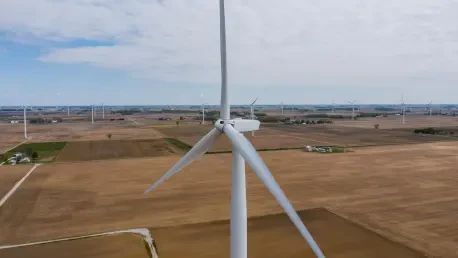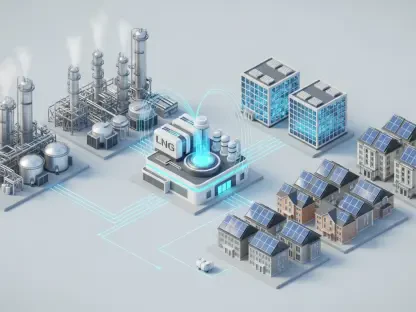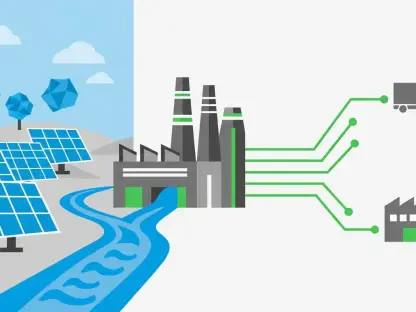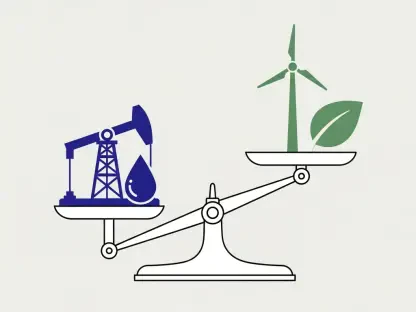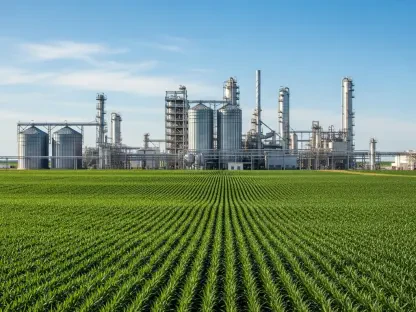Today, we’re thrilled to sit down with Christopher Hailstone, a renowned expert in energy management, renewable energy, and electricity delivery. With his deep knowledge of grid reliability and security, Christopher offers a unique perspective on the evolving landscape of global energy and emissions trends since the Paris Agreement in 2015. In this conversation, we’ll explore the persistent dominance of fossil fuels, the remarkable rise of clean energy, the surge in renewables like solar and wind, and the complex trajectory of energy-related emissions across different regions. Let’s dive into these critical topics and uncover what’s changed—and what hasn’t—in the decade since that landmark climate accord.
Can you paint a broad picture of how global energy sources have evolved since the Paris Agreement in 2015?
Absolutely. Since 2015, the global energy landscape has seen some significant shifts, though the core story remains familiar. Fossil fuels still dominate, making up about 87% of the energy mix today, down just slightly from 89% a decade ago. That’s a small dent despite massive growth in clean energy, which has expanded four times faster than fossil fuels over the same period. The reality is, while renewables and other clean sources are gaining ground, the sheer scale of fossil fuel dependency—driven by record-high production and consumption of coal, oil, and natural gas—keeps them firmly in the driver’s seat for now.
Why do you think fossil fuels continue to hold such a massive share of global energy supplies despite the push for cleaner alternatives?
It comes down to a mix of entrenched infrastructure, economic priorities, and energy demand growth, especially in developing regions. Since 2015, output and use of coal, oil, and natural gas have all hit new highs. Many countries rely on these fuels for baseload power and industrial processes because they’re reliable and, in many cases, still cheaper upfront than transitioning to cleaner systems. Plus, while coal demand growth has slowed in some places, overall fossil fuel momentum hasn’t waned—global energy needs keep rising, and fossil fuels are often the quickest way to meet that demand, even as clean tech accelerates.
Shifting gears to clean energy, what kind of progress have we seen in electricity production over the past decade?
There’s a lot to be optimistic about here. Clean power generation has surged by 22% globally from 2015 to 2024, while fossil fuel-based electricity has dropped by 11%. That’s a meaningful pivot. Regions like Europe and Latin America are leading the charge, with over 60% of their electricity coming from clean sources. Compare that to the global average of about 40%, and you see how far ahead they are. The growth in solar, wind, and battery systems is reshaping utility grids worldwide, even if the pace varies by region.
Speaking of renewables, can you dive into the incredible growth of solar and wind power since 2015?
It’s been nothing short of remarkable. Solar power consumption has skyrocketed by nearly 700% since 2015, and wind power is up by 200%. That’s driven a 68% overall increase in renewable electricity consumption across energy systems. Asia, particularly, has been the powerhouse behind this boom, accounting for about 60% of global solar and wind growth. They’ve got the scale, investment, and policy push to lead. Europe and North America follow, with roughly 20% and 18% shares of renewable deployment, respectively, but Asia’s dominance is clear in both technologies.
Let’s talk about emissions. How have energy-related pollution trends moved since the Paris Agreement?
Unfortunately, the global picture isn’t great. Energy emissions have climbed by nearly 10% since 2015, despite reductions in some areas. Only three of the world’s seven regions have cut emissions in that time, with the U.S. leading the way in absolute reductions, followed by Japan and Germany. But those gains are overshadowed by rising emissions elsewhere, especially in Asia, where China alone has increased its energy pollution more than the combined cuts of the top 20 reducing economies. Countries like India and Indonesia are also adding to the upward trend, so the overall momentum for global emissions is still climbing.
What do you see as the key factors that could help slow or reverse this rise in global energy emissions in the coming years?
A big piece is continuing to scale up renewables and energy storage, like battery systems, which have seen a staggering 17,500% capacity increase since 2015. These can maximize the use of solar and wind by storing excess power for peak demand times. Asia, again, leads in battery deployment, but places like the U.S. and Australia are also building significant capacity. Beyond that, policies that phase out coal faster, incentivize electrification of transport and industry, and support energy efficiency can make a dent. It’s also critical to address rising emissions in high-growth regions through technology transfer and financing for clean energy transitions.
Looking ahead, what is your forecast for the global energy transition over the next decade?
I’m cautiously optimistic. The trends in renewables and clean electricity are incredibly promising, and costs for solar, wind, and batteries will likely keep dropping, making them even more competitive. I expect fossil fuels’ share to continue declining, though they’ll still play a major role, especially in industrial and hard-to-abate sectors. Emissions trajectories will depend heavily on policy—stronger commitments in Asia and other high-growth regions could tip the balance toward a peak and decline by the 2030s. But without accelerated action, particularly in curbing coal and supporting equitable transitions, we risk missing critical climate targets. The next decade will be a defining test of global resolve.
